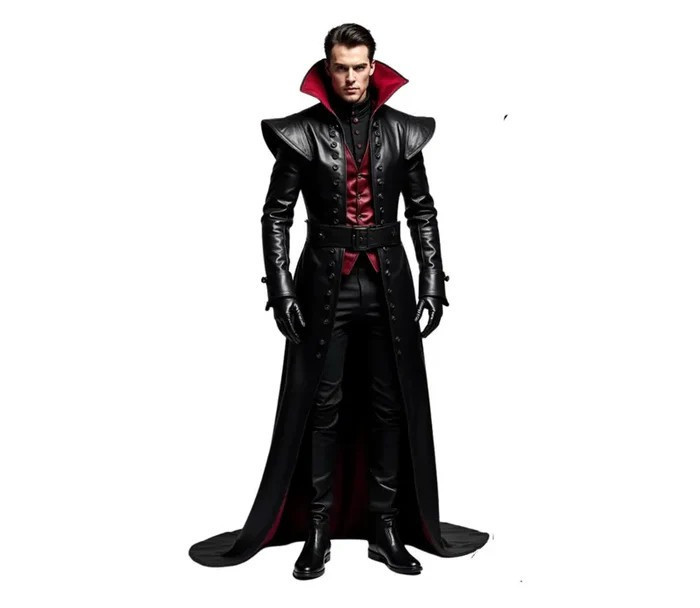views
In a world where imagination knows no bounds, fantasy outfits bring fictional characters, mythical creatures, and heroic personas to life. Whether you're attending a cosplay convention, participating in a Renaissance fair, creating content for social media, or simply exploring your inner adventurer, fantasy fashion offers a rich, expressive canvas for creativity.

This blog post explores the origins, types, materials, and styling tips behind fantasy outfits, helping you build a costume that’s both visually stunning and true to your vision.
🌍 What Are Fantasy Outfits?
Fantasy outfits are clothing ensembles inspired by fictional, mythological, or magical worlds. These looks often draw from literature, fantasy films, video games, folklore, and historical periods—but with a creative twist.
Unlike traditional costumes, fantasy outfits are not confined to one era or genre. They blend medieval, steampunk, gothic, fairy tale, and futuristic elements into personalized expressions of characters, real or imagined.
🧝 Common Themes in Fantasy Outfits
Fantasy fashion can reflect countless characters and worlds. Here are some of the most popular and recognizable themes:
1. Elves and Woodland Creatures
-
Flowy tunics, long capes, natural tones
-
Accessories made of leaves, vines, antlers
-
Leather belts, pouches, and arm wraps
2. Witches, Warlocks, and Sorcerers
-
Dark robes or asymmetrical layers
-
Magical accessories like staffs, wands, or crystals
-
Intricate jewelry, sigils, or glowing accents
3. Fantasy Knights and Warriors
-
Faux chainmail, leather armor, cloaks
-
Medieval-inspired tabards, boots, gloves
-
Helmets, swords, or shields
4. Royalty and Nobles
-
Elegant gowns, velvet coats, gold trim
-
Crown-like headpieces, corsets, gloves
-
Jewel tones like sapphire, ruby, emerald
5. Fairies and Enchanted Beings
-
Iridescent or pastel fabrics
-
Wings, glitter, floral crowns
-
Tulle, lace, and sheer overlays
🧵 Materials Used in Fantasy Fashion
The right material can make your fantasy outfit feel authentic and captivating. Here’s a breakdown of the most commonly used fabrics and textures:
-
Velvet & Brocade: Used for nobility or royal characters
-
Leather (or Faux Leather): Ideal for warriors, hunters, or rogues
-
Linen & Cotton: Perfect for medieval peasants or nature-themed characters
-
Tulle & Organza: Great for fairies and ethereal beings
-
Metal Accents: Buckles, studs, or decorative armor for durability and flair
🎭 Where to Wear Fantasy Outfits
Fantasy outfits aren’t just for Halloween. There are many opportunities to showcase your costume throughout the year:
-
Comic-Con and cosplay conventions
-
LARP (Live Action Role Playing) events
-
Renaissance fairs and medieval festivals
-
Fantasy-themed weddings and parties
-
Photoshoots and creative content creation
-
Online streaming and character-based gaming channels
More and more people are embracing fantasy style as a form of self-expression and escapism, even incorporating it into everyday fashion under styles like “fantasycore.”
🛠️ Tips for Designing Your Own Fantasy Outfit
Creating your own fantasy outfit is a fun, rewarding process. Whether you’re a DIY enthusiast or starting from scratch, these tips can help:
1. Start With a Character Concept
Know who you are portraying. Are they heroic or dark? From a forest or castle? Your concept will guide everything else.
2. Build a Mood Board
Use Pinterest or Instagram to collect outfit ideas, fabric inspiration, and accessory references.
3. Layer Creatively
Fantasy outfits often rely on layers—capes over dresses, tunics under armor, belts over robes. This adds realism and depth.
4. Add Accessories with Storytelling Power
A belt pouch suggests a traveler. A glowing amulet hints at magic. Every item should add to the character’s backstory.
5. Combine Thrift and Craft
Repurpose clothing from thrift stores, then alter or enhance with stitching, dye, beads, or embroidery.
📸 Fantasy Outfit Photography Tips
You’ve crafted the perfect look—now capture it like a pro:
-
Use natural or dramatic lighting: Forests, castles, or candlelight create perfect backdrops.
-
Strike character-driven poses: Let your expression and posture match your role.
-
Shoot in character-appropriate settings: Waterfalls, ruins, gardens, or medieval buildings.
-
Use filters carefully: Enhance the magic but keep detail intact.
These tips can boost your content for cosplay pages, portfolios, or social media engagement.
🔮 Why Fantasy Outfits Matter
In a fast-paced, often rigid world, fantasy outfits give people a way to step outside the ordinary. They foster:
-
Creativity
-
Confidence and performance
-
Connection with fandoms and creative communities
-
An outlet for storytelling and role-play
For many, fantasy outfits are more than costumes—they’re a way of experiencing other worlds and becoming someone else for a while.
🧚 Final Thoughts
Whether you’re crafting an elegant elven cloak or donning battle-worn armor, fantasy outfit give you the freedom to explore, create, and transform. They combine history, imagination, and personal flair into wearable art.
So embrace the magic. Choose your character. Layer your look. And step into a story that’s all your own.



Comments
0 comment